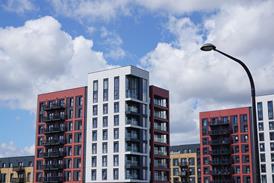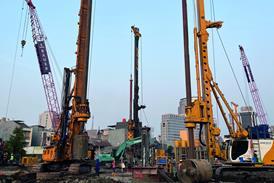All market forecast articles
-
 Features
FeaturesMarket forecast: Why viability is tight for construction projects in the UK
Global uncertainty, combined with domestic regulatory change, a fragile demand outlook and expectations around inflation are combining to create tricky conditions. It’s a finely balanced equation with many moving parts. Pablo Cristi Worm of Aecom reports
-
 Features
FeaturesMarket forecast: Prospects for growth in 2025 remain subdued
With capacity depleted, cost pressures have resurfaced as demand has strengthened – but with interest rates set to stay high, slowing demand growth may help smooth the transition
-
 Features
FeaturesMarket forecast: Demand is set to rise as the economy stabilises
Demand is set to strengthen as economic stability stimulates a recovery in private sector investment, but contractor capacity is depleted and risk aversion elevated
-
 Features
FeaturesMarket forecast: Materials prices and margins are both set to come under pressure
Rising materials prices could cause capacity pinch-points. And where spare capacity exists, intense competition could put margins under greater pressure. Brian Smith of Aecom reports
-
 Features
FeaturesMarket forecast: Why prices for goods and services are still set for further increases
Construction output is falling steadily as high interest rates sap demand, though repair and maintenance is propping up the sector. Despite materials costs rising less rapidly, tender prices are still on the up
-
 Features
FeaturesMarket forecast: Why firms will feel the pressure in 2024
As we head into the new year, input costs are levelling off – in terms of materials at least – but as new orders become patchier, market competition is rising
-
 Features
FeaturesMarket forecast: Why margin compression remains a concern
Against a poor economic backdrop, construction output is holding up in every sub-sector except housing. However there are still reasons to be worried.
-
 Features
FeaturesMarket forecast: Why tender prices are likely to continue rising despite cost inflation easing
The ongoing economic backdrop of elevated interest rates is increasingly impacting construction
-
 Features
FeaturesMarket forecast: Heading for a fall?
Construction output has been on the up, but can this continue in the face of economic uncertainty? Housebuilding in particular looks set for a fall
-
 Features
FeaturesMarket forecast: Weathering the storm
The UK is now clearly heading into recession but strong momentum in construction output should help to insulate our sector, despite only slightly slowing cost pressures
-
 Features
FeaturesMarket forecast: Upward but uneven
As building costs soar, yearly tender price increases are close to double figures – but that should slow next year. And while construction output is still rising overall, there is greater fragmentation
-
 Features
FeaturesMarket forecast: Into the headwinds
Output has recovered almost to pre-pandemic levels, but optimism is falling in the face of inflation, recruitment challenges and red tape
-
 Features
FeaturesMarket forecast: The costs of uncertainty
Output is levelling off as the Ukraine war and Chinese covid lockdowns hit confidence. Meanwhile, the same factors are adding inflationary pressures
-
 Features
FeaturesMarket forecast: Inflation bites
As output rebounds, building costs are soaring at double-digit rates thanks to a variety of inflationary pressures, sending tender prices upwards
-
 Features
FeaturesMarket forecast: On the up and up
Acute inflation in the sector is pushing up tender prices, and with no end in sight to the pressures, this could continue well beyond 2022
-
 Features
FeaturesMarket forecast: Bouncing back
Rising demand and tightening supply are driving up both costs and tender prices. How much of this is just a spike rather than an underlying upward economic trend?
-
 Features
FeaturesMarket forecast: High hopes
While sentiment is high for a recovery, new orders are not fully mirroring this optimism, and a supply crunch is hitting the materials chain hard
-
 Features
FeaturesMarket forecast: Uncertainty looms
There are signs of an increase in output, but ongoing uncertainty around covid lockdowns and Brexit red tape make the future harder to predict
-
 Features
FeaturesMarket forecast: A slow recovery
Construction output and sentiment have regained much ground after their collapse amid the initial lockdown, but ongoing uncertainty means recovery is wobbly
-
 Features
FeaturesMarket forecast: Rising, but for how long?
While the initial bounce-back looks to be V-shaped, there are strong reasons to believe that could change in the medium term as downside risks materialise


















